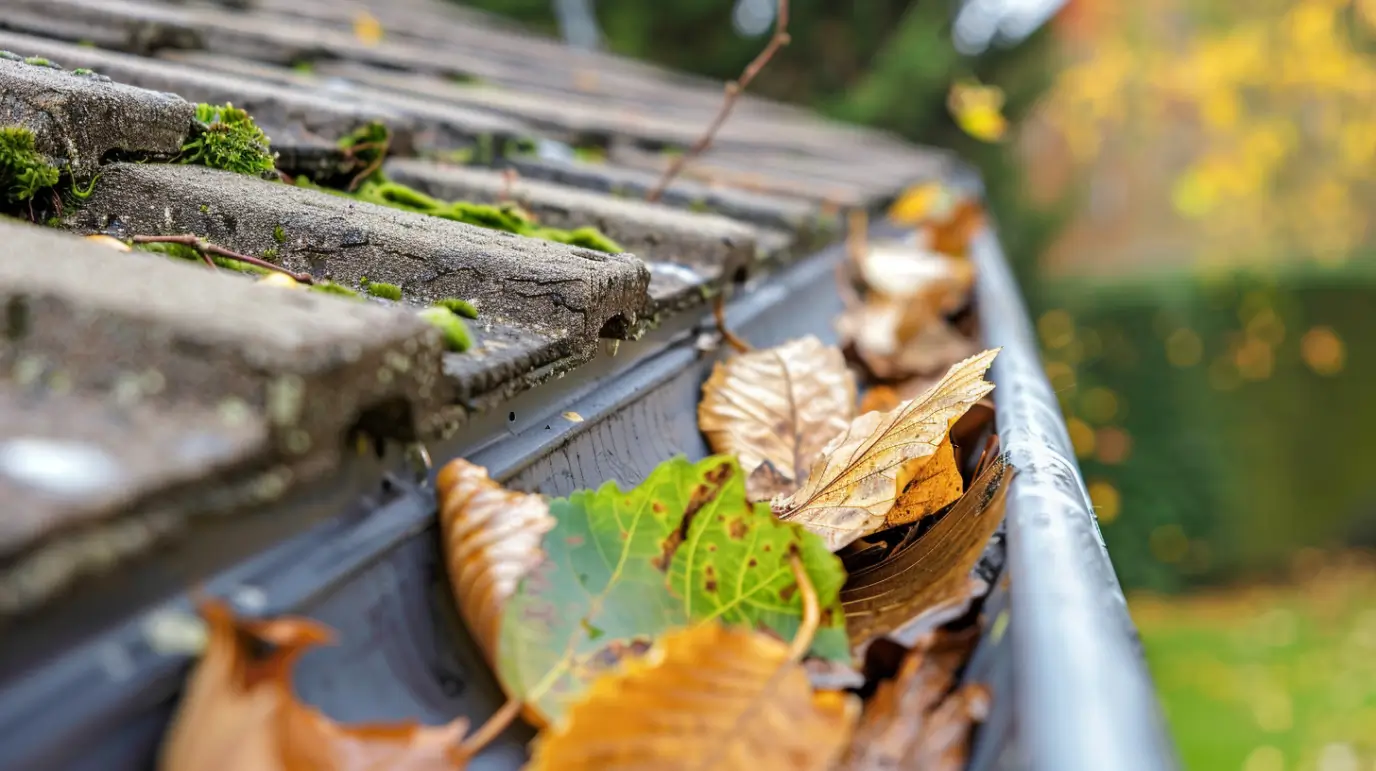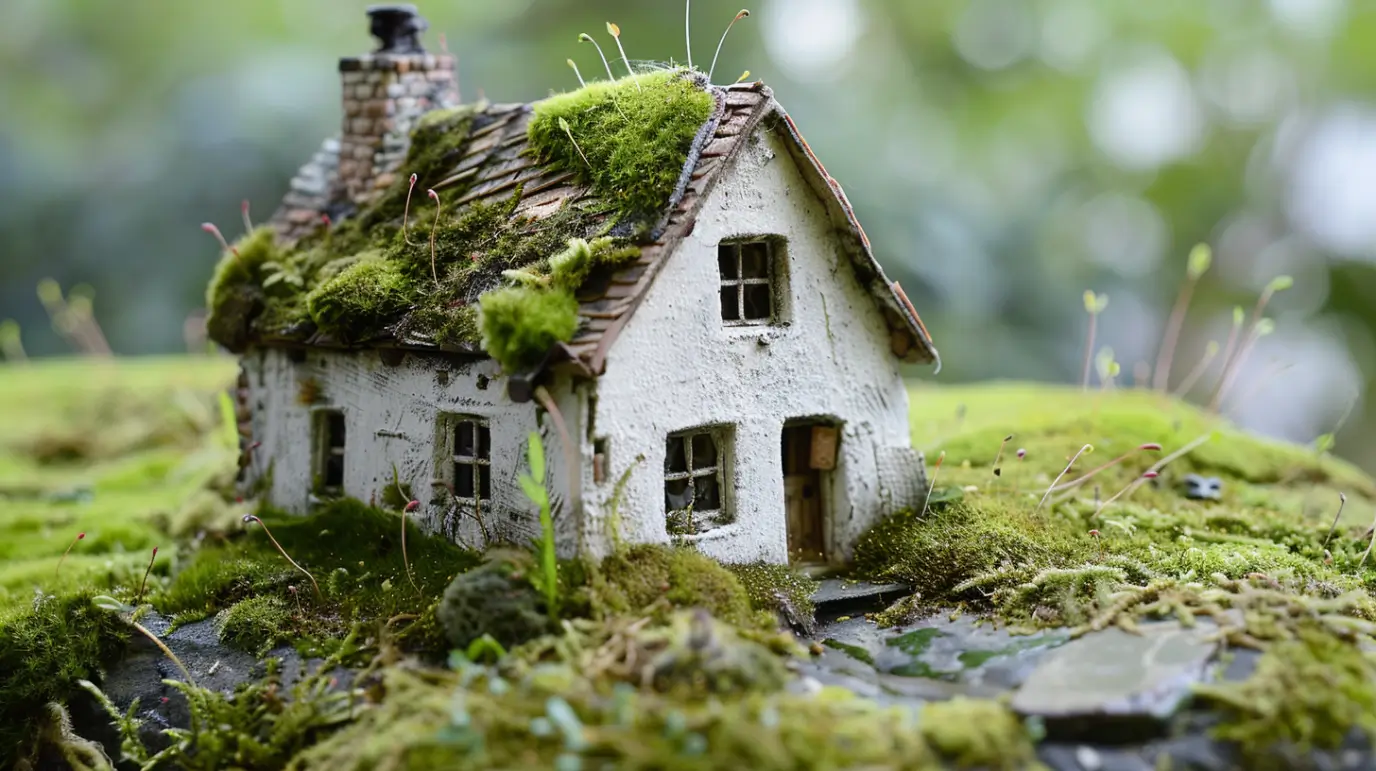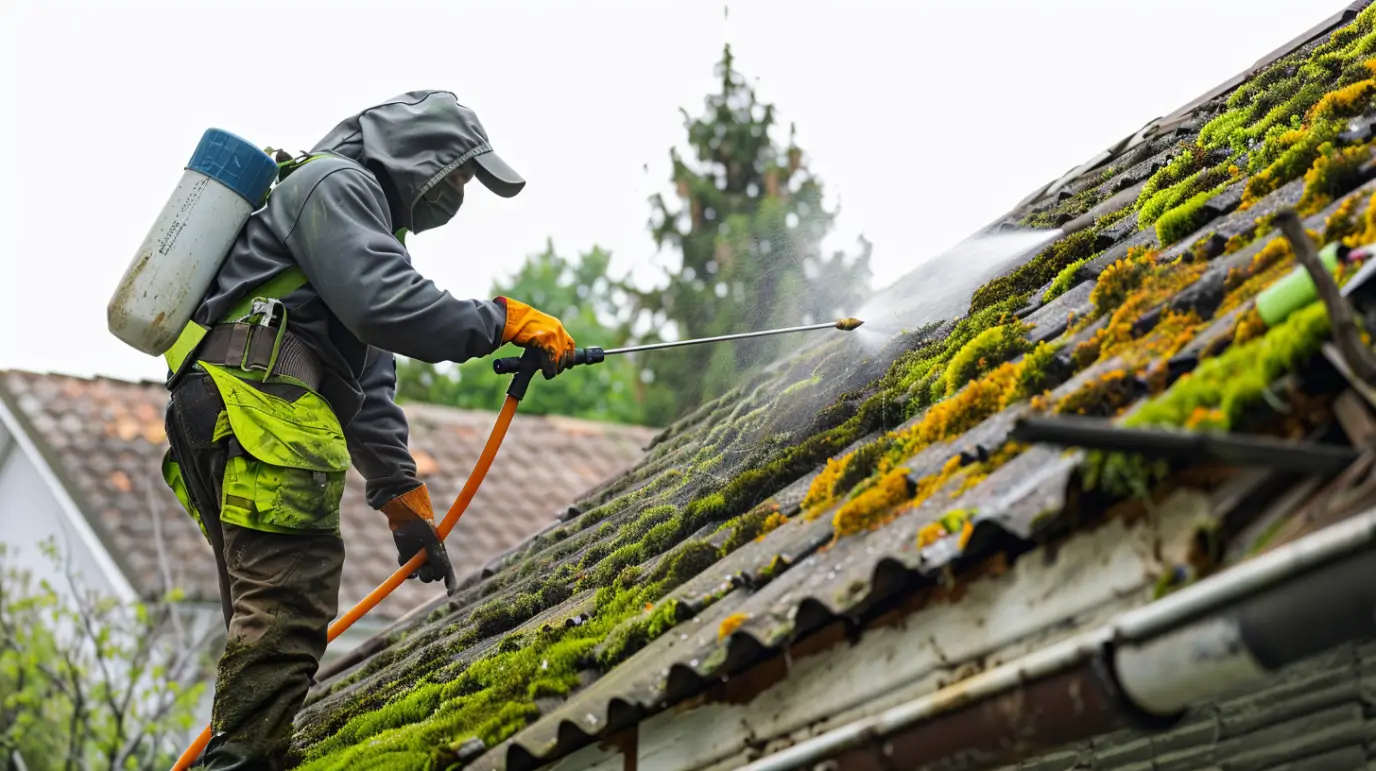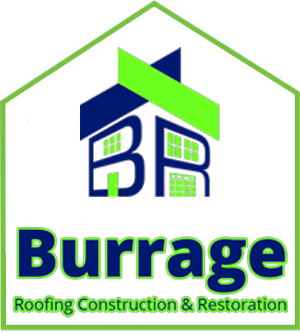Moss and algae on your roof shingles do more than just affect aesthetics; they can compromise your roof’s integrity. Algae streaks or lifted shingles may lead to costly repairs if not addressed. In fact, lifted shingles, especially under overhanging tree branches providing additional shade, can even lead to curl, increasing the risk of further damage that can serve as a food source for moss and algae, and further holds moisture. At Burrage Roofing, we understand the importance of roof maintenance. For over 30 years, we’ve helped Quad Cities homeowners keep their shingles strong and moss-free. Here’s how you can maintain clean shingles for lasting durability.
Understanding Moss and Algae Growth on Shingles
Moss and algae commonly grow on asphalt shingles, particularly in moist conditions. Moss roots penetrate the roof surface, while algae appears as black discoloration from airborne spores.
Both require moisture, shade, and nutrients, often thriving when roof maintenance is neglected. Regular care can prevent moss growth and algae discoloration, preserving your roof’s condition and enhancing your home’s appearance.
Contact Us
Why Moss and Algae Thrive on Roofs
The Quad Cities, is conducive to moss and algae growth due to its high moisture levels from steady rain and overhanging tree branches. These conditions create an ideal environment for moss spores, carried by wind or animals, to thrive in damp or shaded areas.
Algae spores also settle on roof surfaces, particularly where moisture lingers. As these spores proliferate, they form colonies that can damage shingles over time.
Excess shade from trees prolongs moisture retention on roofs, hindering sunlight exposure and allowing moss and algae to flourish. To prevent these issues and protect your roof’s integrity, proactive measures are essential before problems escalate.
The Impact of Humidity and Weather Patterns on Shingle Health
Humidity significantly impacts shingle health. Excess moisture on roofs encourages moss and algae growth, which can weaken shingles over time.
In humid areas like the Quad Cities, frequent rain and cool, damp air promote rapid moss spread. Roofs in shade retain moisture longer, harming shingle lifespan.
To combat these issues, prioritize regular roof maintenance. Remove leaves and debris, and trim nearby tree branches to reduce moisture retention and protect shingle granules.

Risks of Untreated Moss and Algae for Your Roof
Neglecting moss and algae growth can lead to serious roof issues. Over time, they can damage shingles, resulting in costly repairs or premature roof replacement.
Additionally, moss and algae detract from your home’s appearance, potentially lowering its market value. To maintain your roof’s integrity and aesthetics, address these problems promptly. Let’s explore how these organisms harm shingles and the consequences of allowing their spread.
Structural Damage and Reduced Shingle Lifespan
Moss on asphalt shingles in the lower mainland retains moisture, leading to prolonged wetness that weakens the shingles and increases the risk of leaks. It also strips away protective granules, reducing the roof’s lifespan and potentially causing sagging or weakening the roof deck, facilitating the growth of mold.
Additionally, moss can lift shingles, breaking their seal and making your roof more vulnerable to wind damage. Regular roof inspections can help identify moss issues early and prevent further damage.
Curb Appeal and Home Value Considerations
Moss and algae can leave unsightly black streaks on your roof, diminishing your home’s curb appeal. These dark streaks suggest neglect, which can deter potential buyers and impact your selling price. Coastal or humid climates create the most conducive conditions for moss and algae growth, further worsening the problem.
If appraisers notice widespread moss and algae, they might suspect larger issues, further lowering your home’s value. Regular roof maintenance is essential to preserve both appearance and property value.

Proven Prevention Strategies for Moss and Algae
Stopping moss and algae growth starts with being prepared. If you know the right ways to stop them, you can make your roof last longer and keep future problems away.
This means you should check your roof often to find any weak spots. You can also use shingles that help keep away algae for a long time. The best way to make roof maintenance a habit and use simple steps to stop moss is to ensure your roof will stay strong, even in the tough weather of the Quad Cities, in the first place.
Regular Roof Inspections and Professional Maintenance
Regular roof inspections and roof cleaning using a soft brush and low pressure water with a pressure washer are considered the most effective method for preventing moss growth and maintaining the life of your roof, particularly your asphalt shingle roof line. Professionals can identify early moss spores and potential risks. Post-inspection cleaning removes debris, making it harder for moss to thrive.
Key maintenance activities include:
- Using a leaf blower to clear loose organic matter.
- Cleaning gutters to prevent moisture buildup.
- Trimming tree branches to allow sunlight on the roof.
- Scheduling professional inspections to uncover hidden moisture issues.
By maintaining a consistent roof care routine, you can significantly reduce the likelihood of algae and moss, ensuring your roof stays healthy for years.
Choosing Algae-Resistant Shingles and Roofing Materials
Choosing the right shingles is essential for enhancing algae resistance and maintaining your roof’s health.
In the Quad Cities, it’s important to select shingles that reflect sunlight, minimizing heat retention and moisture buildup. Regular inspections and maintenance will ensure optimal performance of your roofing materials. Investing in high-quality shingles prolongs your roof’s lifespan and preserves your home’s curb appeal, making it a wise choice for homeowners in humid climates.
Connect With Us
To ensure the longevity of your roof in the United States, Burrage Roofing in Quad Cities, recommends taking proactive measures against moss, mildew, and algae growth, including innovative solutions that utilize copper-based treatments. As an IKO Craftsman Premier Installer and a BBB Accredited Business, we are committed to providing high-quality roofing solutions. Our partnerships with SRS Supplier, ABC Supply, Richards Supply, Final Siding, and James Hardie further enhance our ability to deliver exceptional service and materials to our customers.
Read our blog: Preventing Moss and Algae Growth on Shingles
Frequently Asked Questions
Can moss and algae cause leaks or water damage?
Yes, the growth of moss and algae growth can cause leaks and water damage. Overhanging tree branches can also drop debris that promotes moss growth, keeping moisture on your roof, similar to how plants depend on their root system. Direct sunlight can harm shingles and let water get in, increasing the risk of shingle blow-off during wind events.

